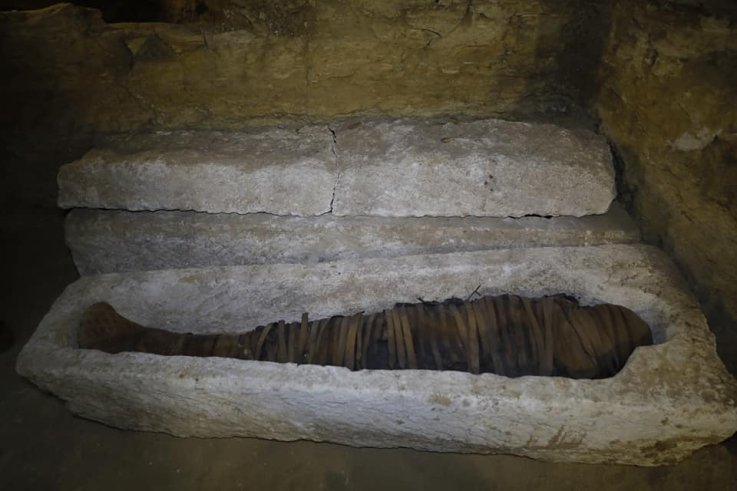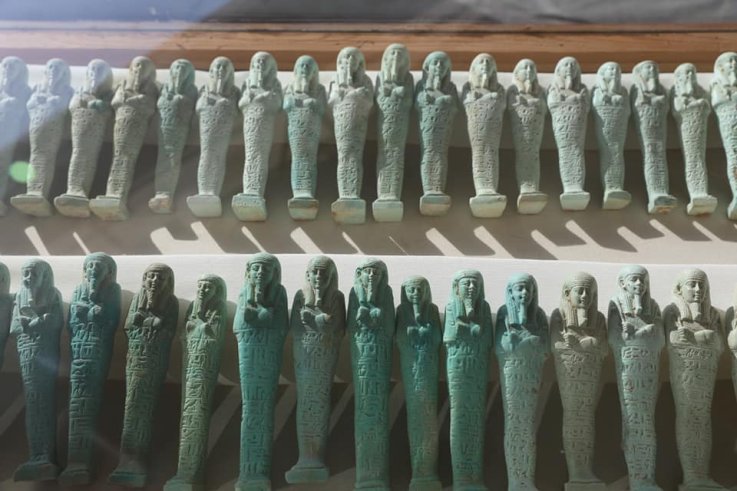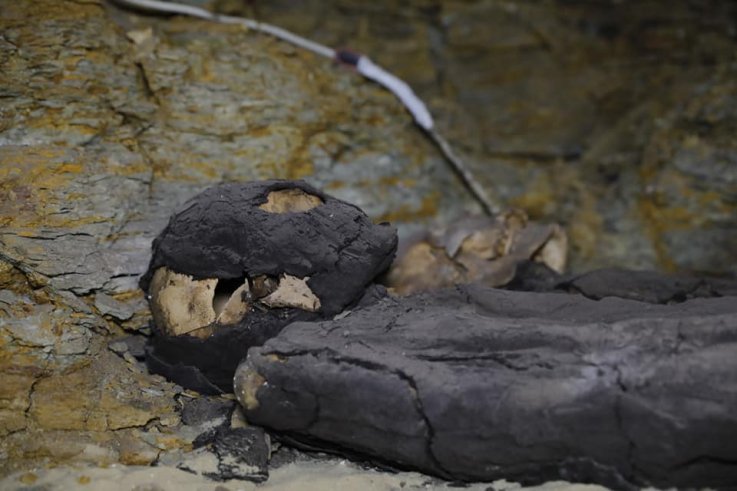https://www.newsweek.com/ancient-egypt-city-dead-amulets-sarcophagi-canopic-vases-priestly-tombs-thoth-1485030
Ancient Egypt's City of the Dead: Amulets, Sarcophagi, Canopic Vases and Priestly Tombs of the God Thoth
Digs in Egypt's City of the Dead have unearthed a hoard of ancient artefacts, including amulets, canopic vases and 16 tombs containing approximately 20 coffins and sarcophagi between them.
Amongst the finds are tombs belonging to high priests of the God Thoth.
The news was announced by Egypt's Ministry of Antiquities on Thursday amid ongoing excavations at Tuna el-Gebel—an archaeological site approximately 270 kilometers (167 miles) south of Cairo, nicknamed the City of the Dead.
The site contains Ancient Egyptian buildings, with some of the oldest dating back to the early Ptolemaic Period, around 300 BCE. These include a temple belonging to the God Thoth, a bird-like deity responsible for writing, accounting and all other intellectual pursuits.
The necropolis at Tuna el-Gebel also features an expansive underground network of galleries where the research team says various types of animals have been buried.

This week, Dr. Khaled Al-Anani, Minister of Tourism and Antiquities, announced the discovery of tombs belonging to high priests of the God Thoth, containing around 20 coffins of varying shapes and sizes. These include five sarcophagi forged from limestone into the shape of a person and five wooden coffins, each in good condition. Some include the names of the owners, engraved into the material.
One of the most important sarcophagi is that of Grand Jehuti Ayov Ankh. According to the Ministry, the coffin is made of polished limestone and bears his titles, which include the royal treasurer and bearer of the seals.

In addition to the coffins, archaeologists have uncovered eight sets of canopic vases used for storing the organs of the deceased and 10,000 or so statues made of blue and green material. Many of these have been engraved with the names of the dead.
Alongside these artefacts were some 700 amulets—smallish objects carried by many in Ancient Egypt (and other parts of the world) to protect the owner from disease and misfortune.
According to the Met Museum, amulets were common and likely inexpensive in Ancient Egypt. Their magical powers were believed to be derived from their shape, inscription, color and material as well as spoken words made over the amulet. In funerary practices, they were either placed on the mummy or among the mummy's bandages.

The finds at Tuna el-Gebel include heart scarabs; objects placed over the deceased heart to improve their odds of passing into the afterlife. According to Ancient Egyptian tradition, the dead's heart would be weighed against truth and justice so that only the good could transition.
The scarab was associated with the sun god, Khepri, and the process of daily rebirth. (The sun was believed to die at night and be reborn in the morning in the form of a scarab beetle.) Thus, it was often used in a funerary context, when the deceased would be reborn into the afterlife.

The collection also contained the Eye of Horus—which were some of the most frequently used amulets, according to the Met Museum. The eye (a mix between a human's and a falcon's) honors the Horus, god of the sky, whose eye was injured or stolen by Set, god of war, before it was restored by Thoth. It represents healing and regeneration.
The announcement comes during the mission's third season. As excavations continue, headed by Secretary-General of the Supreme Council of Antiquities Dr. Mustafa Waziri, archaeologists expect to unearth much more.
-- Sent from my Linux system.
No comments:
Post a Comment